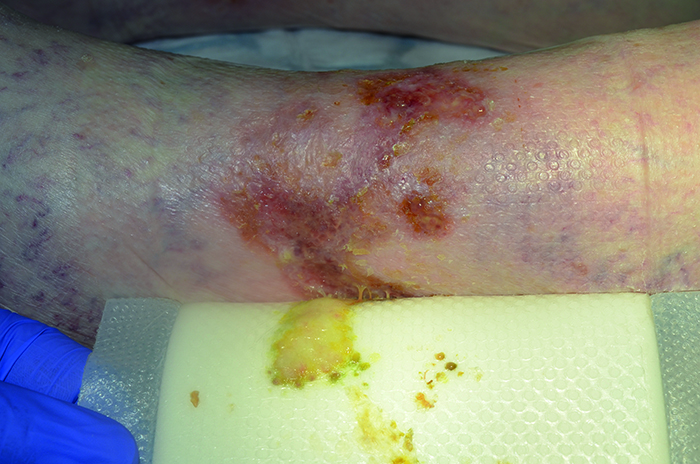Get full access with a free account
Benefits of the Coloplast® Professional Educational platform
- Get full access to all educational content, events and resources
- Track your progress
- Share content with your collegues
- Share supporting material with your patient
Holistic wound assessment
Both patients and HCPs worry why the wound is taking so long to heal and what might be going wrong. Some have to deal with the smell of exudate, which might stop them from going out altogether – adding social isolation to their pain and distress.
Knowing how to assess the patient’s wound correctly is key in putting an end to their pain.
That means covering all the factors that affect the wound’s healing process – from identifying the underlying cause of the wound and the barriers that are preventing it from healing, to setting clear treatment goals and aligning expectations with the patient.
We call this approach holistic wound assessment. Let’s take a closer look at what that involves.
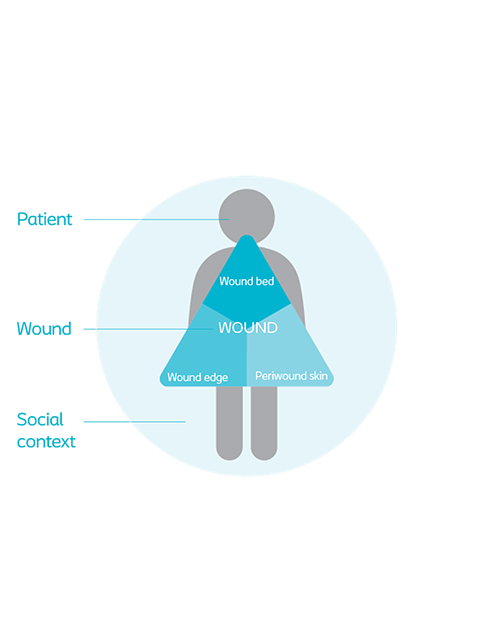
What is holistic wound assessment?
Asthe term suggests, a holistic wound assessment is an approach that takes into account the combination of factors – inside and outside the wound – that affect the healing process.
A holistic wound assessment involves:1
- the patient’s medical history – including current and past medical conditions; their psychological, social and spiritual history; their wound care environment and access to specialised health services.
- a physical assessment of the patient - including factors such as respiration, blood pressure, heart sounds, skin assessment, etc.
- a comprehensive wound assessment – including assessment of the wound bed, the wound edges, the periwound skin and patient pain levels.
Astructured approach to your wound care management plan
The holistic approach to wound assessment is a structured and comprehensive approach to wound management. It helps you to consider all the factors that affect wound healing and gives you a baseline for tracking the healing process so you can adjust the goals you set for management along the way.3
With this approach, you are considering the ‘whole patient’ and not just the ‘hole in the patient’.
A wound assessment and documentation tool will help you to make sure you are conducting a holistic wound assessment. Check out our Triangle of Wound Assessment tool and let that guide you through the process.

Defining a management plan and treatment goals
Onceyou have done a comprehensive assessment of the the patient and wound, you can move on to developing an effective wound management plan and set specific goals for the treatment.
Remember to involve your patient in this process. As you have probably already experienced yourself – and many studies have already documented – engaging patients directly in their care planning and treatment choices improves their adherence to treatment and ultimately ensures better outcomes.1
A wound care management plan typically involves:4
- cleansing the wound;
- debriding it of non-viable tissue (for example, necrosis and slough) to reduce risk of infection;
- managing the moisture balance – rehydrating or reducing exudate levels to create a moist wound environment (for example by using an appropriate dressing);
- protecting granulation/epithelial tissue; and
- improving the patient’s general wellbeing, by reducing pain and any smell coming from the wound.
The goals you set for the treatment of the wound will change over time as the wound starts to heal. But the only way you can keep track of the healing process is by assessing the wound frequently.
How often should you assess the wound?
Awound should be assessed at each dressing change – or at least once a week – to make sure the treatment is having the right effect.5
It’s important that you set dressing change frequency against the treatment goals you have defined. For example, if you are managing a highly exuding wound, frequent weekly dressing changes will be necessary; if you are managing a granulating wound, you will usually only need to do a few dressing changes per week. Remember to document the reasons for how often the dressing needs to be changed.
If you observe any of the following:
- a less than a 20% improvement in the wound area over a period of four weeks;
- unexpected increase in exudate;
- suspected infection or biofilm;
- increased pain or a general decline in the patient’s health and wellbeing
… you should always refer the patient to a specialist.1
References
- M.R. Liberato de Moura, C. Dowsett. Advancing practice in holistic wound management: a consensus-based call to action. Wounds International 2020;11(4)
- Price P, Krasner DL. Health-related quality of life and chronic wounds: evidence and implications for practice. In: Krasner DL, Rodeheaver, GT, Sibbald RG, Woo KY, eds. Chronic Wound Care: A Clinical Source Book for Healthcare Professionals. Vol 1. 5th ed. Malvern, PA: HMP Communications; 2012:XXX–XXX.
- Strohal, R., Apelqvist, J., Dissemond, J. et al. EWMA Document: Debridement. J Wound Care. 2013; 22 (Suppl. 1): S1–S52.
- Dowsett C et al. Triangle of wound assessment. Made easy. Wounds International, May 2015
- Dowsett et al. (2020). Closing the gap between the evidence and clinical practice – a consensus report on exudate management (11(3))
You may also be interested in…
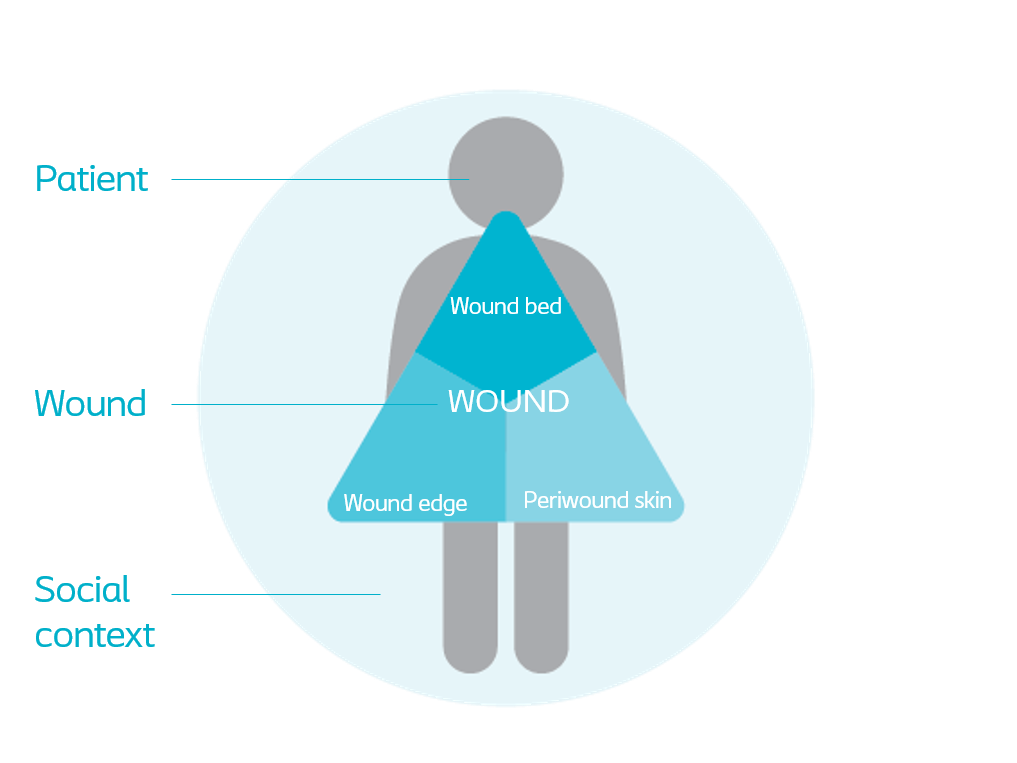
HEAL e-learning
Learn about holistic and systematic wound assessment and management with this EWMA-endorsed course.
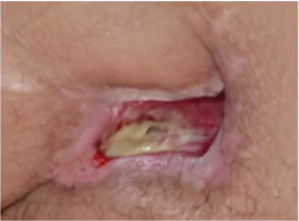
Patient case video
Watch how a recurring pressure ulcer was managed with a silicone foam dressing.

Support your patients
Support your patients in caring for their wounds with this patient hand-out.
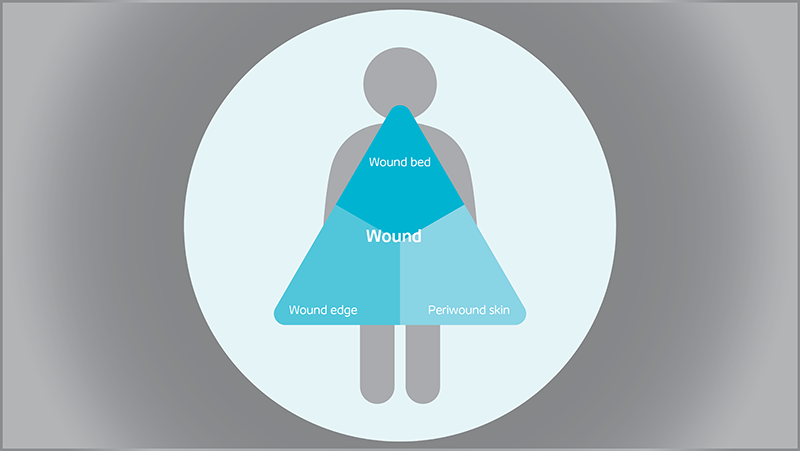
Triangle of Wound Assessment
Conduct a holistic and systematic wound assessment with our tool.

